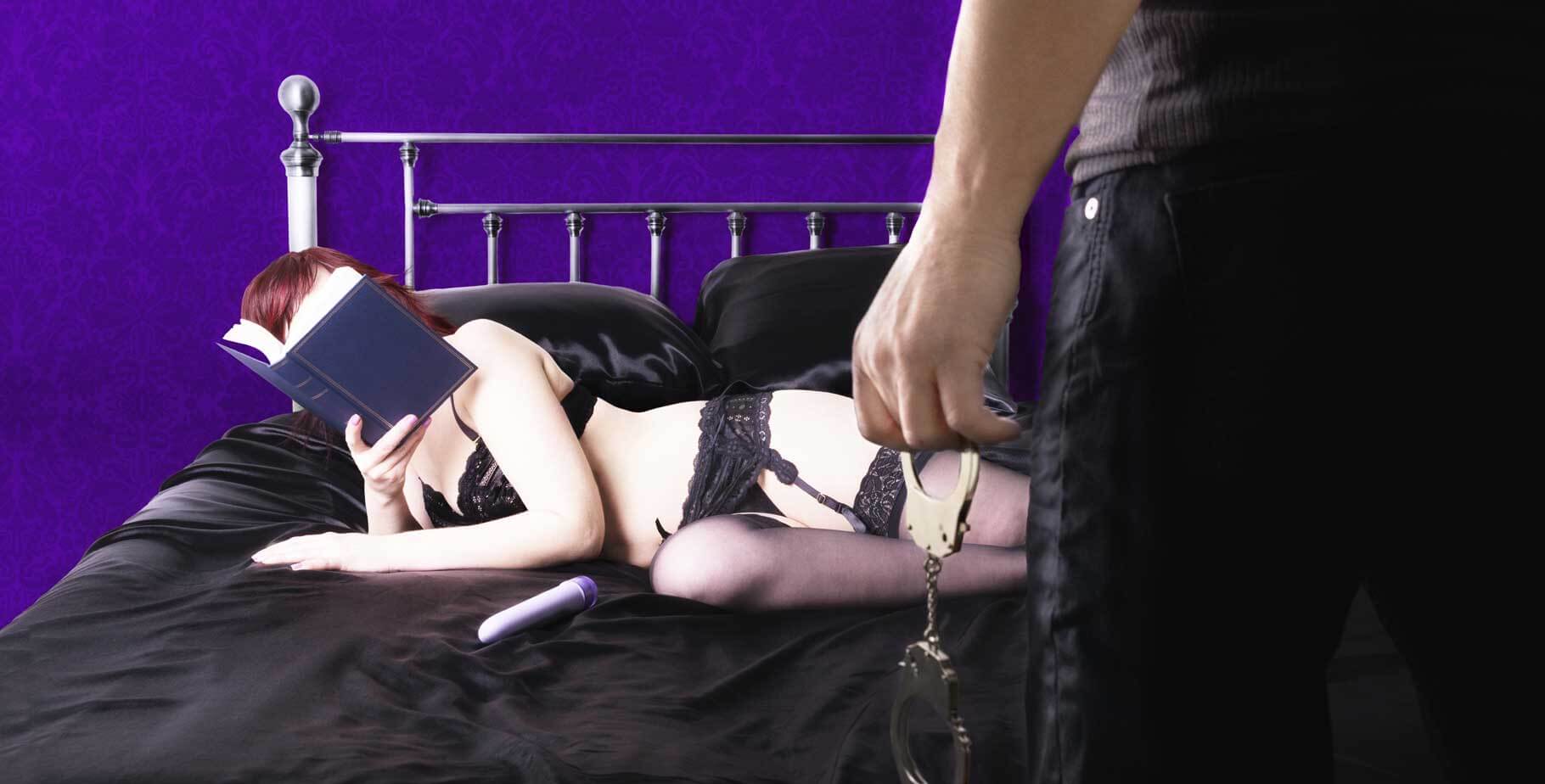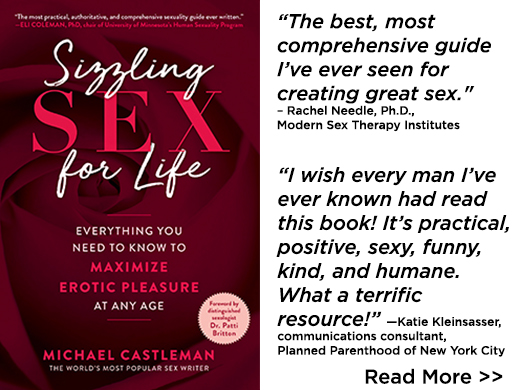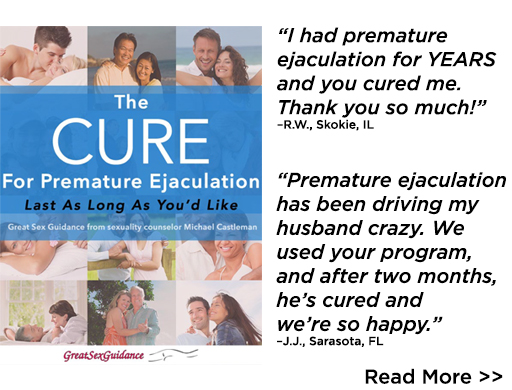
Mention vibrators, and most people immediately think of women’s sexual pleasure. And no wonder: Vibrators easily provide direct clitoral stimulation intense enough to produce orgasm reliably and enjoyably during either masturbation or partner sex. Vibrators can enhance the pleasure of lovemaking, and are especially helpful for women who have difficulty having orgasms in other ways.
But women’s sexual pleasure was the furthest thing from the minds of the male doctors who invented vibrators more than a century ago. These physicians were interested in a labor-saving device to spare their hands the fatigue they developed masturbating a steady stream of 19th century ladies who suffered from “hysteria,” a then-vaguely defined ailment that today we recognize as sexual frustration. Therein hangs a strange tale that provides quirky insights into both the history of sex toys, and cultural notions about women’s sexuality.
The Scourge of “Hysteria”
Until the 20th century, American and European men believed that women did not experience sexual desire, and that intercourse culminating in male orgasm was all women needed to experience sexual satisfaction. Women basically concurred. They were socialized to believe that “ladies” had no independent interest in sex, and were merely the passive receptacles for men’s unbridled lust, an unfortunate trait they had to endure in order to have children.
Not surprisingly, these beliefs led to a great deal of sexual frustration on the part of women, who complained to their doctors of anxiety, sleeplessness, irritability, nervousness, erotic fantasies, feelings of heaviness in the lower abdomen, and production of vaginal lubrication. This syndrome became known as “hysteria,” from the Greek term for uterus.
Over the centuries, doctors prescribed various remedies for hysteria. In the 13th century, physicians advised women to use dildos. In the 16th century, they told married hysterics to encourage the lust of their husbands. Unfortunately, that probably didn’t help too many wives because modern sexuality research clearly shows that only 25 percent of women are consistently orgasmic from vaginal intercourse. Three-quarters of women need direct clitoral stimulation some of the time or every time to have orgasms. For hysteria unrelieved by husbandly lust, and for widows, and single and unhappily married women, doctors advised horseback riding, which, in some cases, provided enough clitoral stimulation to trigger orgasm.
From Massage to “Paroxysm”
But many women found little relief from horseback riding, and by the 17th century, dildos were less of an option because the arbiters of decency had succeeded in demonizing masturbation as “self-abuse.” Fortunately, an acceptable, reliable treatment appeared—having a doctor or midwife massage the genitalia. With enough genital massage, hysterical women could experience sudden, dramatic relief through “paroxysm,” which virtually no medical authority called orgasm, because, of course, everyone knew that women did not have sexual feelings, so they could not possibly experience orgasm.
By the 19th century, physician-assisted paroxysm was firmly entrenched in Europe and the U.S. It was a godsend for many doctors. At that time, the public viewed physicians with tremendous distrust. Most doctors had little or no scientific training, and had few treatments that worked. This caused a great deal of patient dissatisfaction. But thanks to genital massage, hysteria was a condition doctors could treat with great success. Treatment produced large numbers of grateful women, who returned faithfully and regularly, eager to pay for additional treatments.
Physicians’ Fatigued Arms and Hands
Unfortunately for doctors, however, hysteria treatment had a downside—tired fingers and hands from all that massage. In medical journals of the early 1800’s, doctors lamented the fact that many hysterics taxed their physical endurance. They had trouble maintaining the treatment long enough to produce the desired result.
Necessity being the mother of invention, physicians began experimenting with mechanical substitutes for their hands. They tried a number of genital massage contraptions, among them water-driven devices (the forerunners of today’s shower massage attachments), and steam-driven pumping dildos. But these machines were cumbersome, messy, often unreliable, and sometimes dangerous.
Granville’s Electromechanical Vibrator
Then in the decades after the Civil War, electricity became available for home use, and the first electric appliances were invented: the sewing machine, the electric fan and teakettle, and the toaster—followed soon after, around 1880, by the electromechanical vibrator, patented by an enterprising British physician, Dr. Joseph Mortimer Granville. The electric (also battery-powered) vibrator was invented more than a decade before the vacuum cleaner and the electric iron.
The electric vibrator was an immediate hit. It produced paroxysm quickly, safely, reliably, and as often as a woman might desire it. By the dawn of the 20th century, doctors had lost their monopoly on vibrators and hysteria treatment as women began buying the devices for home use, thanks to advertisements appearing in such magazines as Women’s Home Companion and Needlecraft, and the then-venerable Sears & Roebuck Catalogue, whose copy gushed: “…such a delightful companion….all the pleasures of youth…will throb within you….”
Vibrator Backlash—and Resurrection
Electricity gave women vibrators, but within a few decades, electricity almost took them away. With the invention of the motion picture, vibrators started turning up in stag films during the 1920’s, and as a result, lost their social disguise as “massagers,” and their acceptability along with it. Advertisements for them disappeared from the consumer media, and they were difficult to find well into the 1970’s.
But some inventions are so useful, so necessary for so many people that they are destined to survive and thrive despite lingering attempts at suppression, for example, bans on vibrators in Georgia and Texas. The latest research shows that today, an estimated one-third of American women own vibrators, and 10 percent of couples use vibrators reasonably regularly in partner sex.
And to think: We owe it all to physicians’ fatigue.
Adam & Eve offers a wide variety of vibrators.
Resource:
The Technology of Orgasm: “Hysteria,” The Vibrator, and Women’s Sexual Satisfaction, by Rachel Maines. Johns Hopkins University Press, 1999.





